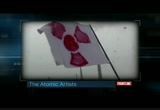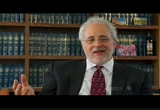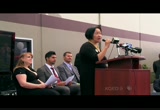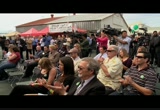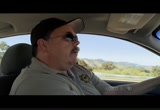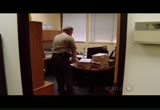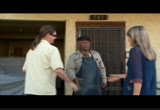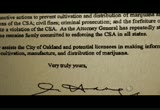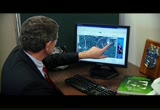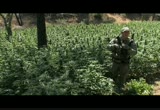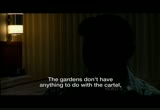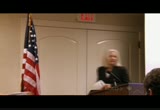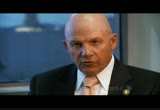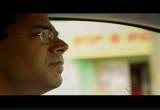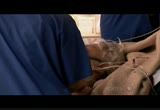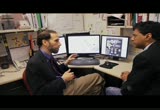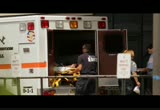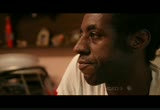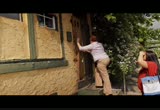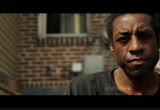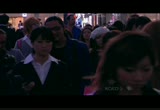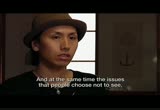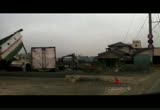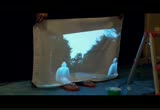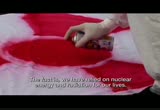tv Frontline PBS July 26, 2011 10:00pm-11:00pm PDT
10:00 pm
>> tonight, three stories in this special edition of frontline. first... >> the silicone valley of pot... >> the marijuana megastore... >> california's green rush... >> california is the leading producer of marijuana in the united states. >> 14 states have approved medical marihuana. >> but is the party over? >> i was told by the justice department this is clearly not legal. >> frontline, the center for investigative reporting and kqed go inside "the pot republic." in our second story tonight, from the pages of the new yorker to frontline... >> better care for sick people is a game changer.
10:01 pm
>> so what's your ultimate goal here? >> writer atul gawande profiles one doctor's innovative way of reducing health care costs. >> there were hotspots by disease, hotspots by patient, by zip code and by neighborhood. >> and finally, in japan... >> i rented a geiger counter before leaving on this trip. >> marco werman of pri's the world discovers a group of artists and their provocative response to the recent nuclear disaster. >> ( shouting in japanese ) >> these three stories on this special edition of frontline. >> frontline is made possible by contributions to your pbs station from viewers like you. thank you. and by the corporation for public broadcasting. major funding is provided by the john d. and catherine t. macarthur foundation. committed to building a more just, verdant, and peaceful world. and by reva and david logan.
10:02 pm
committed to investigative journalism as the guardian of the public interest. additional funding is provided by the park foundation. dedicated to heightening public awareness of critical issues. and by the frontline journalism fund, supporting investigative reporting and enterprise journalism. additional funding for frontline's expanded broadcast season is provided by the bill and melinda gates foundation. ( cheers and applause ) >> montgomery: san francisco's cow palace has hosted everything from rodeos to revival meetings. but last summer, it was home to something completely different-- a trade show for marijuana. when i first began covering this story, marijuana was on the
10:03 pm
verge of becoming legal here in california. inside, it already seemed pretty legal to me. >> the coolest mug in the city, right here. >> montgomery: everything was on offer-- pot smoothies, pot cookies, every known device for smoking, inhaling and generally consuming marijuana. >> california was the wild, wild west 150 years ago, and it's the wild, wild west again now, when it comes to cannabis. >> montgomery: attorney william panzer co-authored california's medical marijuana law back in 1996 to help seriously ill patients. but 15 years on, he says it's created the biggest marijuana marketplace in the country. >> it's opened the door for a lot of different cannabis- related businesses. you can imagine when they repealed prohibition, the kind of industry that came up around alcohol-- not just alcohol itself. same thing was happening. and it's still happening here.
10:04 pm
>> montgomery: today, under proposition 215, almost any adult can get medical marijuana anytime. it's as easy as filling out a form, meeting with a doctor for a few minutes and, here, paying $100 for the wristband that says you're legal, and gets you smoking your favorite bud within minutes. >> how you doing, man? i'm dhar, by the way. okay, nice to meet you. this is derek. >> montgomery: medical marijuana has also created a new kind of business opportunity for someone like dhar mann. >> we actually have marijuana plants growing inside of our store. so, it's 15,000 square feet... >> montgomery: a self-described "pot-repreneur," mann was making the rounds last summer with his business partner, derek peterson. >> tell me, what are you trying to find here? what are you looking for? >> i mean, you know, just looking around, there's different types of apparel companies, seed companies, medical marijuana recommendation centers... >> montgomery: their plan was
10:05 pm
nothing if not ambitious-- a chain of marijuana superstores, in california and many of the 15 other states that have adopted medical marijuana laws in recent years. in this "walmart of weed," they would sell all of the supplies a grower might need, everything but pot itself. but, for mann and peterson, the big prize was across the bay in oakland, where, that same summer, the city was making headlines with a bold new plan. >> oakland could soon become the first city in the country to make growing pot in large warehouses legal. >> last night, oakland becoming the first city to authorize industrial-scale farms to grow medical marijuana... >> montgomery: oakland's idea was to auction off four licenses for massive indoor grow facilities to supply the state's medical marijuana dispensaries, the first official experiment with industrial-scale pot production in the country. ( applause )
10:06 pm
oakland city officials were feeling pretty confident about the plan. in october, at the opening of the we grow marijuana superstore, the main candidates for mayor were running hard on the economics of pot production. >> people often ask me how much taxes do we get currently? under the current system, we're getting just under a million dollars in taxes... sales tax for the medical marijuana. but when the production facilities come online, we're estimating, in the first few years, $5 million to $8 million. now, that is a sizable chunk of change. >> was the city council in the city of oakland perhaps dazzled by the great riches that were going to come our way? absolutely. they talked about it, calling it the "green rush," right, in line with the gold rush. this is the new green rush. >> montgomery: oakland's then-city attorney, john russo, said the plan faced big legal hurdles, but the city was determined to push forward. >> you can understand. municipal budgets are under tremendous stress.
10:07 pm
when you're talking about laying off police officers, closing libraries, and along comes this idea that, at minimal expense, will allow the city to pick up several million dollars worth of revenue, of course they were eager to do that. >> oakland is very proud to be able to combine our progressive politics and good business today. thank you. >> montgomery: but oakland's plan to grow medical marijuana got the attention of the us department of justice. you started getting signals from the feds that... that this was not a good idea. >> "signals" is a very subtle way of describing it. they were very clear with me verbally, and came to visit me on two different occasions to tell me, in effect, "what is oakland doing? this is clearly not legal." >> montgomery: a few hours' drive north of oakland, another
10:08 pm
plan to regulate medical marijuana growing was being launched, more quietly and carefully, in an area known as the emerald triangle. though you'll see only a few outward signs of it, these little towns are home to some of the biggest pot producing farms in the country. the hippies who pioneered pot growing here decades ago are still around. but the business has scaled up dramatically in the last few years, with vast pot fields set up like organic farms, and state-of-the-art equipment to help get more pot to market faster for younger growers like joey berger. >> this sound that we're hearing, this noise, this is the noise of an industry here, yeah. the twister is the leading cannabis trimming machine on the market today. it can turn the workforce of five into the workforce of 30 or more. and it's revolutionizing the way medical cannabis collectives process. and they're able to save money, and they're able to pass those
10:09 pm
savings on to their patients. >> montgomery: growers at farms berger works with are careful to say all this pot is headed for medical marijuana patients and dispensaries, and not the black market. but it's been getting harder for local law enforcement to tell the difference. that's why, last year, mendocino county launched an unusual program. sergeant randy johnson was put in charge. >> well, it's new territory. none of us had ever done anything like this. it's not even all the way legal. i mean, it's legal in our county. >> montgomery: johnson used to bust local pot growers; now, he's working with them. >> 'morning. >> good morning. >> montgomery: matt cohen is one of the new breed of growers in the county. >> how's everything going? >> busy, busy, busy. >> montgomery: for years, he says he's tried to run his medical marijuana operation like a legitimate business. so, when the county announced a new program to license pot growers, he was one of the first to sign up.
10:10 pm
>> right here, you can see it says "mendocino county sheriff" on it. it's upside down, though. >> montgomery: these zip ties mark the plant as legal. cohen paid $50 for each of the ties, $1,500 to join the program, and $500 for every inspection. in return, cohen gets to grow a lot more plants than otherwise allowed-- up to 99 of them, which can generate several hundred thousand dollars a year in income for his farm co-op. and he gets to do all this without any fears of getting busted by the sheriff. >> and have you been having any problems with your security, or has that been working out well?" >> no, it's been going... it's been working good. >> i want to see the whole program to succeed. i want to see the county succeed. i want to see mendocino county be the napa of cannabis after prohibition, you know. i want all the good people in this community that are doing what they're doing-- i want them to be doing it legally and still have a job.
10:11 pm
>> if you get this so it's... maybe use cable, so you can make it tight so that it doesn't... you don't have that loop. >> they don't sloop... swoop into each other. >> some people are watching this right now, shaking their head, saying i can't believe there's a cop in uniform that's working with marijuana people. we're not a bunch of cheech and chong law enforcement officers that are encouraging people to grow marijuana. nothing could be farther from the truth. >> montgomery: mendocino county sheriff tom allman has been walking a tightrope with marijuana growers for years. then came medical marijuana, and increasing confusion about what's legal and what's not. >> we're trying to remove the gray area. we are trying to make it black and white. and if we can remove the gray, if we can remove the inconsistencies, if we can have people not confused about the marijuana laws, then i have succeeded. >> montgomery: how do you keep track of what matt is growing here? when we first began filming last
10:12 pm
fall, only about 20 growers had signed up for the tagging program, generating a few hundred thousand dollars in fees for the cash-strapped county. >> the cannabis is grown in mendocino county through the local regulation ordinance here. >> montgomery: but cohen, like other growers in the program, has a problem-- getting his product to his customers. >> basically, i'm the boss, and i've got to make this run because our two guys got nailed two days in a row last week. so i'm making the run. >> montgomery: two of cohen's delivery men were pulled over at random by police in neighboring sonoma county, and arrested for transporting illegal narcotics. now, as he heads south with several pounds of medical marijuana in the back, he makes a last minute call to his business manager in case there's a bust. >> of course, you know everybody... if it's the feds, you don't need to talk to anybody. you choose to remain silent, "i want to speak to my lawyer." and if it's the locals, then, you know, they're our pals and
10:13 pm
do whatever they ask of us. i'm just going to set the cruise at 65. we'll see if we get pulled over. ( laughs ) the irony is that most of the cannabis driving down this road is probably going out of state. >> montgomery: on this day, cohen's making a delivery to one of his customers near oakland. >> hey, nate. hey, how's it going, nate? >> hi. hi. >> i'm matt. >> montgomery: in the end, it's a fairly routine transaction for cohen and his staff. the price, the letter from the customer's doctor-- it's all been worked out by phone and internet. but it's also been an obstacle course of local, state and federal laws. >> the problem is that the medical marijuana program act was the result of a committee of a lot of people putting it together, and it doesn't make a lot of sense. there's a lot of internal inconsistency in the medical marijuana program act which leaves it open for very wide interpretation.
10:14 pm
>> california's ballot measure to legalize marijuana... >> montgomery: it was with an eye to settling these inconsistencies that pro-pot advocates around the state had made a big push for a new marijuana law last fall. >> make california the first green state. we've got the blue states and the red states... >> montgomery: in oakland, they gathered on election night to watch the results of the state ballot measure, proposition 19, that would have fully legalized marijuana use in california. so, the polls closed an hour ago. prop 19 looks like it's not doing so well. when the votes were counted statewide, legalization was defeated. >> when proposition 19 failed, that clearly put oakland city council in a difficult place. >> montgomery: over at city hall, they now had a decision to make. it was about whether to push forward with their plan to grow medical marijuana on a massive scale and tax it. then, a letter arrived...
10:15 pm
this is a letter written to you... >> yes. >> montgomery: ...from the u.s. attorney here in northern california, warning oakland about the plans to license large-scale pot cultivation. and what's the essence of the letter? >> the essence is, "this is clearly illegal. you can't do this. we're concerned that it is contrary to federal law." >> montgomery: the letter, from the new us attorney, melinda haag, drew a hard line at oakland's industrial growing warehouses, threatening criminal prosecution of city officials if necessary. the city decided to put the pot production plan on hold. not long after, the we grow pot superstore in oakland, which had opened with such fanfare just six months earlier, closed its doors. the politics of pot are, for now, at a stalemate. but the state's marijuana marketplace, legal and illegal, is still thriving.
10:16 pm
>> you can see that large patch that's vacant here. that was all weed. >> montgomery: a few hours south of oakland, among these vegetable fields in the state's central valley, drug agents say pot production is now booming right in plain sight. >> they're drying some in that white truck right there and they're processing stuff, but that's pretty much all that's left. >> montgomery: bill ruzzamenti was a special agent with the dea for 30 years, and now runs a federally-funded drug task force in california to seek out and seize illegal marijuana and eradicate the grows. >> can you open it up? sure. open that up, too, if you don't mind. can i... i'm going to take it out, okay? >> yeah, take it, take it. >> is this shake or is it processed? this is processed. >> montgomery: this looks like an open and shut case, until ruzzamenti sees the posted doctor's recommendations.
10:17 pm
they're curing and getting this marijuana ready, and there's nothing you guys can do? >> no, because it's all being done under the auspices of 215-- that it's a medical marijuana grow, and that they have posted permits or posted recommendations from doctors that preclude the sheriff's department and/or anybody else from taking it off. the whole concept of medical marijuana is being used as a cover by drug traffickers and drug dealers to sell marijuana outside of the state of california, where they can make more profit. >> montgomery: earlier in the week, sheriff's deputies were able to seize thousands of pounds of pot from the same area. it would have been worth several million dollars wholesale in california. but the cops allege that the pot
10:18 pm
was actually going to be driven out of state. >> investigators say the two women never stopped to sleep and drove straight through california, arizona, new mexico and texas... >> montgomery: teaming up with a local news team, the task force tracked the rest of the fresno pot to dallas, where it was going to be sold for triple the price. >> marijuana's by far the most profitable of all the illegal narcotics-- cocaine, methamphetamine, it blows them away. there's another grow right there. >> montgomery: former irs agent rick adams spent decades working money laundering cases linked to marijuana grows across california. >> here's one here, here's one here. >> montgomery: he says so many growers have flocked to california that the local market is flooded, so the big profits come from out of state. >> you can sell it for so much more per pound in new york city and in virginia than you can here in california, because of the glut in the market here in california. it just moves. if you can't sell it here, move it over there. here's a grow, here's another one...
10:19 pm
there's a grow. >> we're walking north up east fork of the cotton creek in shasta county. >> montgomery: back around the emerald triangle, national demand for california pot is now attracting a new influx of growers to these forests. they come in from out of state-- often from out of the country-- and try to turn a fast profit. >> there's plots like this all the way up for half a mile. they get them in quick-- three months, turn it around, get another three-month grow out of it. and that's what we're starting to see more and more. >> montgomery: even seasoned drug agents have been surprised by the scale of these massive new pot grows. >> our numbers are already skyrocketing. in the last three weeks, we've done 140,000 plants. >> montgomery: last year, they seized seven million plants, which they say would have been worth some $17 billion. and a lot of this pot is now being grown on public lands, sometimes in national parks, often in fields guarded by men with guns.
10:20 pm
>> i've had people come to me and say "my family has hunted in the mendocino national forest for five generations, and we don't go there anymore because, every time we go there, we hear shots being fired around, or people have literally walked into our hunting camp and said, 'get out of here'." >> montgomery: for sheriff allman's men, tensions around the new growers in the forest came to a head last year. talk of mexican drug gangs and even the cartels led to more raids, and then to several shootings, mostly of mexican men guarding big grows. >> as our swat team was clearing through one of the gardens, they came down a real narrow trail in the brush, and it just opened up into a camp with about seven people in it. one guy stayed. he had an ak-47 type rifle and a handgun, and actually pointed it and tried to get a round off at our swat team. and they, of course, engaged and took his life. >> montgomery: we made contact
10:21 pm
with a man who used to run marijuana grows in california backed by mexican money. he's now working closely with law enforcement. >> he says the mexican cartels are not directly involved, but former members are helping finance and distribute california pot. >> a lot of those people are afraid that they're going to be targets themselves in mexico, so they figured out that it's easier to come to the u.s. they can grow a lot of marijuana. they know how to smuggle in aliens. they have all those networks already set up. >> montgomery: tommy lanier helps coordinate national marijuana strategy with the
10:22 pm
office of the white house drug czar. he says california's medical marijuana law has encouraged mexicans fleeing the drug wars to move north. so for mexican pot growers, drug traffickers, california's a sort of a safe haven. >> we have established and probably dismantled well over a hundred organizations since 2004, mexican traffickers that are involved that have connections to mexico. these people are engaged in making money. they like to exploit the medical individuals that are the 1% or 2% that use marijuana for the purpose of pain management. >> montgomery: so, 1% or 2% of the marijuana grown is going into the medical marijuana industry, and the rest is going into the black market? >> i would say it's pretty close to that, yeah. as far as i'm concerned, the medical marijuana industry is a black market, so in my point of view, there is no legal/illegal. it is illegal. >> montgomery: back in mendocino county, sheriff allman has to
10:23 pm
square that federal position with his local realities. so he's invited tommy lanier to a meeting with state and local officials to lay out a bold new plan. >> this is going to be the biggest teamwork operation that our six rural counties have ever seen. >> montgomery: allman is proposing an assault on those big pot farms on public lands. and he wants the feds to help him root out the big players he suspects are behind them. he's got their attention, including the us attorney whose letter shut down the oakland grow plan, melinda haag. >> so, i have met with the sheriff since i became us attorney. we've talked about this issue in my office. >> montgomery: but, on this same day, 20 miles to the north, sheriff allman's own officer, randy johnson, was conducting a very different kind of meeting with the marijuana growers signing up for mendocino's legal zip-tie program. >> ...is that, prior to july, when this program started, what i knew about marijuana was chop it down and haul it to the evidence locker. okay, so i've learned a lot about what you're doing. >> montgomery: the irony of the
10:24 pm
day was not lost on county supervisor john mccowen, who had helped design mendocino's program. on the one hand, you're talking about big raids on illegal growers, and on the other hand, you're licensing legal pot growers. >> um... we are so blessed. ( laughs ) but the reality is i think both things are necessary. if marijuana is ever to be legalized, it will be regulated. and i think that what we're actually doing-- although, again, this was not the intention-- by creating a model of what legal, regulated marijuana looks like, i hope we are paving the way for an end to prohibition. >> montgomery: mendocino county's quietly radical experiment with pot regulation is gaining support among the growers, and over 80 have now signed up with the sheriff. but as they come out of the shadows, they're worried.
10:25 pm
around the country, states with medical marijuana laws have been getting warning letters from their local us attorneys and, now, from washington as well. >> i think what the u.s. attorneys have done is an extremely great way to send a message to everybody that this is the position of the department of justice, and it doesn't matter if you're in california, oregon, washington, michigan, this is the standard. >> montgomery: does that same threat go to sheriff allman? could he be under some kind of legal threat from the federal government? >> yes. whether it's a permit program, regulation or something like that, they're against federal law. and yeah, they could be a target. >> montgomery: are you concerned that the feds are going to go after you because of this program? >> if they can give me a rational alternative, i'll be their best friend. but there's not. i mean, 14 states and the
10:26 pm
district of columbia are on this slippery slope. and they're all saying the same thing-- that the voters have approved medical marijuana, one way or the other. you know, i haven't seen it going the other way by the voters. i haven't seen voters saying, "let's take it off the books." >> montgomery: the word in recent weeks is that letter from the us attorney may soon arrive here in mendocino county, right in the heart of growing season. then, everyone involved in the tagging program, from the growers to the sheriff's office to county officials, may be forced to decide-- shut it down or risk jail themselves.
10:27 pm
>> coming up later on this special edition of frontline, artists respond to the nuclear disaster in japan. but first... >> the most expensive people were getting terrible care. >> ...one doctor's innovative way of reducing health care costs. >> there were hotspots by disease, hotspots by patients, by zip code, and by neighborhood. >> "new yorker" writer atul gawande meets doctor hotspot next. >> gawande: camden, new jersey, sits in the shadow of philadelphia. it's a city that seems in a constant state of peril. poverty here is rife.
10:28 pm
unemployment is double the national average. public institutions are in crisis or, like the local library, simply shuttered. it's officially one of america's most dangerous cities. but camden may also be the city to help solve one of america's most intractable problems-- lowering the cost of health care. as a doctor and writer for the new yorker, i came here to meet the local physician who began to figure it out. it all started ten years ago with a shooting. >> i was working in my house one evening. heard gunshots, then got a call from a neighbor. so i went running down the street. the police had gotten there already. so i ran up and said, you know, "i'm a physician. where's the victim?" and they all sort of turned
10:29 pm
around and said, "he's over there." >> what is the location? >> he was laying on his side facing the back tire, and he had a pulse. he wasn't breathing. started rescue breathing. eventually, his pulse stops. so i was just pretty overwhelmed by the whole thing and angry and... >> gawande: you were angry that they hadn't been even tending to the victim. >> yeah. i said, "why didn't you guys help him?" and the police officer said, "we didn't want to dislodge the bullet." i mean, it was just a complete blow-off. and i couldn't imagine how we could have reached the point in our society, in this city, where you would just leave a victim lying there in their own blood. he was a rutgers student and he was close to graduating. you know, he was one of the wonder kids that make it out of urban communities, and here he was just about to make it out. >> gawande: brenner's immediate response was to get involved in
10:30 pm
police reform. he thought if he could get a hold of crime statistics he could map hotspots, the places where good policing would make a difference. but the department wasn't interested in helping a local doctor. so he went to another place, one he knew well-- the hospital. there, buried in billing records from the er, where violent assaults get treated, he found crime patterns. as he crunched the hospital data, brenner discovered something totally unexpected-- other kinds of hotspots. >> it became clear that there were hotspots of everything. there were hotspots by disease, hotspots by patient. there were certain patients who had been, over and over and over, going to the emergency room and hospital too much. there were hotspots by zip code and by neighborhood. so you sit and begin to look through the data, and i'm looking at my patients who are
10:31 pm
in the data, and realizing i had no idea how much health care cost. i had no idea how expensive it was. and it was just shocking. >> gawande: brenner says the numbers showed that 1% of people living in camden accounted for 30% of hospital charges, most of those racked up in the emergency room. so you're compiling all of this information coming from all of the hospitals in the local area. >> compiling massive amounts of data. >> gawande: brenner then turned that raw information into visual information. >> so this is a map of the city of camden. and this is looking at cost data, so the red areas are high-cost hotspots. these are parts of the community where people who have more than a million dollars in payments to the hospitals live, and this is over a five and a half year period. >> gawande: so here, you pulled out the two most expensive city blocks, but you found in your community, there are two buildings that are the most expensive places. >> that's exactly right. so, the building on the bottom, abigail house, is a nursing home. and the top one, northgate ii, is an apartment tower with elderly and disabled people.
10:32 pm
>> gawande: $83 million in bills. >> that's right. >> gawande: that's probably more than the cost of the building. >> yes, yep. >> gawande: this being america, where we all demand the best that medicine can offer, you might assume that at least, for the money, the residents were getting good care. but brenner found the majority of the care for chronic diseases, from asthma to cancer to diabetes, was being done in the er, not a good place to treat chronically ill patients. treatment was not coordinated, follow-ups were not part of the plan. >> it was really obvious from the data that the most expensive people were getting terrible care. and i knew them, so i'd walk in the exam room and say, "mrs. rodriguez, i haven't seen you in three months. where you been?" "well, i've been in the icu for a month and a half, i've been in the hospital for another couple of weeks." and i'd say, "well, what happened?" and she'd say, "well, i'm not really sure. a lot of doctors came in the room, they never really explained anything to me, but i've got this whole bag of medicine." so, american health care doesn't do a good job of taking care of
10:33 pm
sick people. the way we built our system is really a system that's very hard to access. it works well for the average patient, but if you are blind, if you're deaf, if you're disabled, if you're in a wheelchair, if you don't speak the language, if you're developmentally delayed, if you have a complex mix of illnesses with many providers involved, the whole system starts to break down. >> gawande: brenner's big insight was to use his data to target the sickest and most in 2007, supported by small grants from foundations, he put together his team of medical "hot spotters." >> hey, ann-jenay, it's kathy jackson giving you a call from the coalition. i was wondering if you had a chance to do your blood glucose logs. >> gawande: the most visible part of the camden coalition of healthcare providers are these nurses, social workers and medical assistants. >> it's also important to show that he was really going all over the state. >> gawande: three years later, his team of trouble shooters has
10:34 pm
sought out and organized care for more than 300 people. >> we need to make sure we have transportation that's going to be able to accommodate a disability. >> gawande: when i visited, kathy jackson was making a house call to one of her most challenging patients, derek. do give me the briefing on derek, because i haven't met him yet. >> derek's in his 30s, and he has a seizure disorder. >> gawande: okay. >> and then, his other problem, which gets him in the hospital most of the time, is asthma. it's always an issue. he's always wheezing, and the house isn't... it's dirty, it's dusty, roaches, all kinds of... all kinds of triggers. so we took a contractor there, and the contractor said that he really wouldn't want to be liable to fix it up because he's afraid it would actually, like, crumble. >> hi, derek. how you doing? >> all right. >> yeah. >> gawande: i'm atul gawande. i'm a doctor from boston, but also a writer. so, derek, you've had a number
10:35 pm
of hospital stays and emergency room visits because of asthma, i hear. >> right. >> gawande: what happens when you have your asthma attack? >> when i start wheezing, my lungs are actually, you know... it's like a rubber band. it just closes up, like, really tight, and it'll be hard for me to breathe. >> we think the house probably is part of it. there's a lot of dust, with the walls, the open walls. >> yeah. >> gawande: would you mind, derek, if i have kathy just show me around the places in the house that she thinks might be contributing to your asthma? >> yeah, sure. >> gawande: okay. that'd be great. i'd just like to see for myself. >> okay. >> you want to lead the way, then? >> gawande: before kathy started working with him, derek was in the emergency room 35 times over six months. oh, yeah, there's lots of mold in here. that cannot help your asthma. kathy's work with derek includes everything from inhalers to insurance to finding a contractor willing to rehab the
10:36 pm
house. why don't we just say, "derek, fix your house. you've got this and that falling apart." >> his family probably lives on about a thousand dollars a month. so, they're not really capable. they're barely able to make ends meet. >> gawande: without the team, derek didn't have enough help with another medical problem, epileptic seizures. what are all the crosses? >> that's what helps me, you know, in case if i have a epilepsy. >> gawande: how does that help you? >> well, i just start praying, that's all. >> gawande: oh, yeah? >> mm-hmm. >> have you had any seizures recently? >> no. >> how long's it been, a week, a month? >> a week. i feel more comfortable with kathy jackson than the doctors and nurses in the hospital. you know, i can tell kathy my
10:37 pm
problems-- you know, i'm wheezing and stuff like that. she checks me out, you know, and hears my lungs, you know, talks to me. >> as always, you always have some wheezes, but you're moving pretty good air, so that's good. >> she's the one that keeps me out the hospital. >> we're going to come back in one month, june 13th at 11:00. >> gawande: under kathy's care, over the last six months, derek's er visits have been reduced from 35 to just two. >> see you. >> gawande: and brenner thinks they can do even better, if he can get other people from around the city to think like hot-spotters. >> we formed this as really a way of beginning to think, agency by agency, how we can pull together for the most challenging cases. every month, the whole city comes together-- front line providers, social workers, and we do anonymous case discussions at the city level. so when someone like derek shows up at one of the emergency rooms, they'll call us right away. >> actually, in 2011, he had two hospitalizations and...
10:38 pm
none in april and only one since may. >> gawande: so how much has your team been able to lower the cost for this really expensive group of patients? >> so we've seen some preliminary results of 40% to 50% reductions in visits and costs. >> gawande: 40% to 50% reduction in costs. >> in cost and visits. >> gawande: the savings are hard won, and it takes persistence. >> mr. harris, it's kelly and ana from the coalition. >> you can't completely alter people's life circumstances. we're not going to cure poverty. the question is how can you take the current situation that a patient's in, and improve it enough to make them a little bit healthier and lower their unnecessary er and hospital use, and make them have a more productive interaction with the healthcare system? >> do you see anything? >> gawande: this idea of
10:39 pm
focusing on the sickest to lower costs for everyone seems to be working here in camden. but there are hotspots in every community. what if you took this idea and put it in play across the country? it might just work, but there's a catch. how would the medical establishment react if, suddenly, their most expensive-- and lucrative-- patients started costing half of what they do now? if this kind of experiment works, though, you're talking about dropping the number of hospital visits as a whole. >> yes. >> gawande: you're talking about removing people from emergency rooms. >> yes. >> gawande: they could have to shut down floors and beds. >> yes, yes. >> gawande: they're not going to be with you on this, are they? >> this kind of work is a game-changer, and this is a blockbuster video moment for america's hospitals. >> gawande: what do you mean by "a blockbuster video moment?" >> so, along comes netflix, and there had to have been a moment when a young executive walked in and said, "hey, they're starting to rent videos online." and blockbuster said, "no,
10:40 pm
people like coming to the video store. we're not going to make any change." so, disruptive change comes along, and i think better care for sick people is disruptive change. we have inflated a capacity bubble in our country to do expensive, high-tech hospital-based care. >> gawande: so what's your ultimate goal here? >> so, i'd like camden to be the first city in the country that bends the cost curve dramatically while improving quality. because if the poorest city in the country can do it, it makes the rest of the country look silly. >> coming up next on this special edition of frontline, a provocative response to the daiichi nuclear disaster. "the atomic artists" begins right now.
10:41 pm
>> werman: it's the evening rush hour in shibuya train station in tokyo. more than a million and a half people come through here each day. it's one of the busiest stations in japan. i'm here to report a series of stories on the aftermath of the march 11 earthquake. when i arrive, staring down at the passing crowds is this incredible 100-foot-long mural. for a long time, japan's contemporary cultural scene has intrigued me. this piece, titled "the myth of tomorrow" by taro okamoto, is among japan's most famous. it's a chronicle of this country's atomic horrors.
10:42 pm
it's a pretty impressive painting, this "myth of tomorrow." it's kind of surprising nobody's stopping to look at it. here's a larger-than-life reminder of japan's history-- the only country to have suffered not one but two atomic bombs. and it's mind-boggling to me that it's at the center of yet another atomic disaster. these horrors would be made fresh on march 11 when northeast japan was engulfed by a tsunami that caused meltdowns at the fukushima daiichi nuclear power plant. all across the fukushima region, people's lives will never be the same. well, we're headed towards the village of iitate, which lies somewhere between the city of fukushima and the nuclear power plant. i've been told that radiation levels are somewhat higher today in fukushima. so i rented a geiger counter in boston before leaving on this
10:43 pm
trip, because they're very hard to come by in japan, right now, for obvious reasons. as the nuclear crisis spiraled out of control, towns surrounding the plant were evacuated. as we approach iitate, the numbers are shooting up now, which is not good for human health. 470. 523. whoa, this is elevated. iitate lies 25 miles northwest of the plant, and it's as close as i'm prepared to go on this trip. it was a farming town before the disaster. but with high radiation levels, tokyo ordered a mandatory evacuation, something that was unthinkable for the mayor, norio kanno.
10:44 pm
>> werman: the mayor isn't alone. many others told me japanese people have to question the lifestyles they've taken for granted. some are even taking to the streets-- something, i'm told, that's out of character for this country. >> japanese people, even though they're angry inside, they don't show it. but this is a very important turning point. and now, i think those ordinary people, they have to stand up and really become strong. >> werman: as a leading author who has been writing about japan for nearly 50 years, mitsuko shimomura told me she has never seen this many people challenge japan's direction. >> there is a kind of consensus
10:45 pm
and everybody's talking-- this is a message to tell us that we have to change. >> werman: change is being expressed in all kinds of ways, but i kept hearing about one especially provocative group that i wanted to meet. this is the tokyo-based art collective chim pom. ryuta ushiro is the leader of chim pom, which formed six years ago. he told me this is a defining moment for his generation. >> werman: chim pom's six members, all in their 20s and 30s, are prepping their installations and paintings for a traveling show of their recent work on fukushima. so describe what's in this exhibit here, because this is actually a detail of a mural
10:46 pm
that, actually, i saw in the shibuya train station the other day. >> werman: ushiro told me they named the painting of the crippled fukushima reactors "level seven," after the disaster received the highest rating on the international scale for nuclear accidents. fukushima and chernobyl are the only level seven accidents in history. chim pom never imagined their work would be taking on themes like nuclear disasters. they told me that, in the beginning, they were inspired by, of all things, the mtv show jackass.
10:47 pm
10:48 pm
>> werman: a few weeks after the tsunami, they traveled to a fishing village in fukushima. hand in hand with some young locals from the fishing community, they created a video piece that became an expression of solidarity. they called it "100 cheers." ( shouting in japanese ) ( cheers and applause ) >> werman: "100 cheers" was chim pom's immediate response, but
10:49 pm
that was only the beginning. as the nuclear crisis ( cheers and applause ) >> werman: "100 cheers" was chim pom's immediate response, but that was only the beginning. as the nuclear crisis intensified, chim pom decided whatever they created had to come from experiencing the source of the crisis itself. so on the one-month anniversary of the earthquake, they packed haz mat suits, their art supplies, and their video camera, and headed to the fukushima daiichi plant.
10:50 pm
10:51 pm
attention to chim pom and their work about fukushima. in their most recent project, chim pom used "level seven," their painting inspired by the mural in shibuya, to add the latest chapter of japan's atomic history. they literally gave taro okamoto's painting an update. >> werman: did you have to destroy any of okamoto's
10:52 pm
10:53 pm
but perhaps, for some of these japanese commuters, they may not look at okamotos' painting, and their futures, quite the same way again. >> next time on frontline, in the days after hurricane katrina... >> people were shot and killed by the new orleans police department. >> ...six controversial cases... >> bodies just don't burn up like that. >> the way it was destroyed was telling a story. >> did the police use necessary force? >> people have no idea what this was like. >> or were they out of control? >> how do you take back a city? >> frontline, propublica and the time-picayune investigate "law and disorder." >> frontline continues online. track the medical marijuana laws and the price of pot in your state; see more of chim pom's artwork; read more of our interviews with dr. jeffrey brenner... >> it was really obvious that
10:54 pm
the most expensive people were getting terrible care. >> and don't miss our online exclusive reporting that raises new questions about the fbi's case against the alleged anthrax killer. follow frontline on facebook or twitter, or join the discussion at pbs.org. >> frontline is made possible by contributions to your pbs station from viewers like you. thank you. and by the corporation for public broadcasting. major funding is provided by the john d. and catherine t. macarthur foundation. committed to building a more just, verdant, and peaceful world. and by reva and david logan. committed to investigative journalism as the guardian of the public interest. additional funding is provided by the park foundation. dedicated to heightening public awareness of critical issues. and by the frontline journalism fund, supporting investigative reporting and enterprise journalism. additional funding for frontline's expanded broadcast
10:55 pm
10:56 pm
"now you told me there was an interesting story- where did you find this?" "my mother had a cousin..." "...grandpa..." "...husband's parents ..." "...great uncle..." "...mom's 3rd cousin... "...governor of vermont..." ..that i'd found laying on a trash pile..." "...flea market..." "...dealer..." "...in the dirt..." "...she paid 45..." "...25 dollars..." "...never seen one quite like this..." "...rare..." "...fabulous..." "...fantastic..." "...25,000 dollars..." "...250,000 dollars...' " "...300,000 dollars..." "...oh my god!" every treasure tells a story. antiques roadshow only on pbs.
233 Views
IN COLLECTIONS
KQED (PBS) Television Archive
Television Archive  Television Archive News Search Service
Television Archive News Search Service  The Chin Grimes TV News Archive
The Chin Grimes TV News Archive 
Uploaded by TV Archive on

 Live Music Archive
Live Music Archive Librivox Free Audio
Librivox Free Audio Metropolitan Museum
Metropolitan Museum Cleveland Museum of Art
Cleveland Museum of Art Internet Arcade
Internet Arcade Console Living Room
Console Living Room Books to Borrow
Books to Borrow Open Library
Open Library TV News
TV News Understanding 9/11
Understanding 9/11
